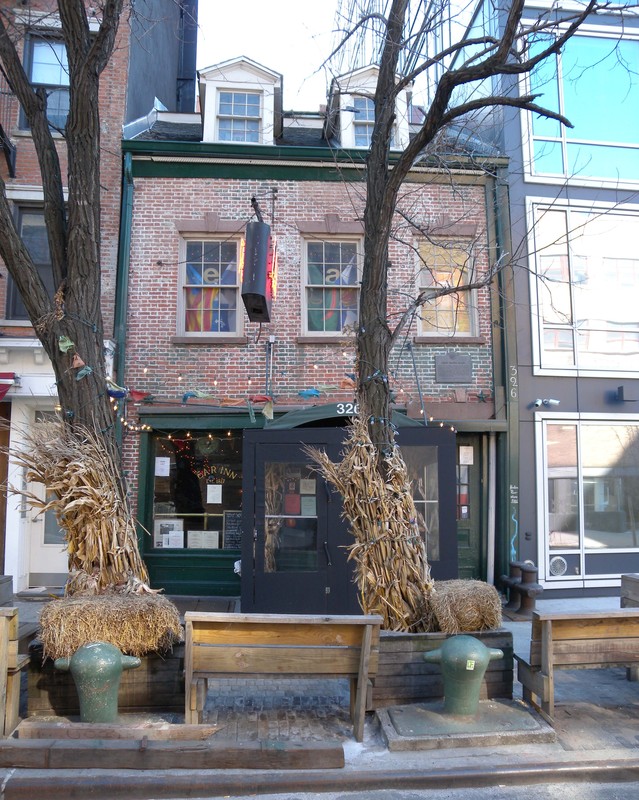James Brown House (Manhattan)
Introduction
Text-to-speech Audio
Images
A view of the house as The Ear Inn in 2009.

Backstory and Context
Text-to-speech Audio
The James Brown House was built in 1817 as a home for James Brown, a veteran of the American Revolutionary War. It is said that, as a three-story house, Brown lived upstairs, and he ran a tobacco shop on the first floor for a time. Records are unclear as far as exact dates go, but the building is also recorded to have had a bar on the first floor from at least 1835, and that it is highly probably that is had been a bar for some years before it was recorded in 1835. Records also indicate that it changed hands twice before the end of the 19th century: the first time in the middle of the century to two apothecaries, and the second time to a man named Thomas Cloke, who renovated the building into a bar and restaurant.
During Prohibition, the building was used as a speakeasy, and after Prohibition ended, the house was re-opened and became a popular bar, especially among sailors, known as “The Green Door.” On November 19, 1969, the house was designated as a New York City Landmark, though the building was becoming run-down. A year later, a man named Rip Hayman and several friends bought the bar and went about restoring it, calling it “The Ear Inn” after the group’s music magazine, “The Ear.” On August 11th, 1983, the building was placed on the National Register of Historic Places. Today, The Ear Inn continues to be a favorite bar among locals in the area.
